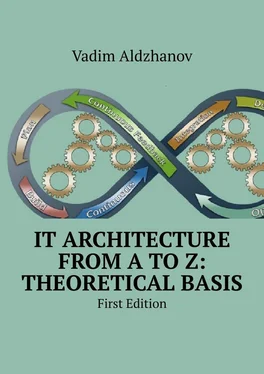• Human resources (who, when, how and how long is involved in the project);
• Material resources (available, required, and so on);
• Administrative resources (authorities, organization).
Besides, this list of required resources may include changes in the company’s organizational structure, office space (for large projects), and so on. The practice shows that two most likely scenarios for resource allocation can be identified as follows:
• The project manager determines the necessary resources based on a preliminary plan, which provides an initial estimate of the amount of resources required for the project. The project manager will be able to formulate resource requirements and discuss them with the authorized manager. This scenario is the most preferable one.
• Required resources are assigned without involving the project manager. The project manager usually may not have a choice, regardless of whether sufficient resources are allocated to the project, or not. One should not be misled by the leadership and agree to the level of support, which is clearly insufficient for the project implementation. Caution and common sense should be decisive at this early stage.
The document containing the project review is compiled, analyzed by experts, and then submitted to the organization’s leadership. The next important aspect of project management is the process of splitting a project into parts, resulted in a work breakdown. A work breakdown is a hierarchical representation of a project. It helps the project manager determine the tasks to be done in order to start and finish the project. At this stage, the manager has a goal and a number of tasks that must be expressed through the tasks and work to be performed. A well-defined assignment has the following features:
• Its status and termination date is easy to determine, it has a clearly defined beginning and an end;
• It is clear, since it might have been carried out before. The time and associated costs required for its implementation can be easily estimated using the experience gained during implementation of similar tasks in the past;
• It includes controllable jobs that do not depend on activities comprising other tasks;
• It is typically one continuous work sequence.
The time to complete each task within the project should be estimated. The time required to complete the task is a random value. Therefore, if this task is recurrent, the time will change for many times. This will be fair even for regular tasks. This variation is caused by the following factors:
• The qualifications level of employees involved;
• Using various equipment;
• Availability of materials;
• Force majeure (diseases, natural disasters, accidents, rotation, etc.)
Such events may occur, but it is impossible to predict them when implementing a specific project or a task. However, they should be taken into consideration. To do this, one can use the critical path evaluation method.The cost of each assignment should be also estimated. There are four main cost categories (although organization’s chart of accounts may be used) to determine for each assignment:
• Work force;
• Materials;
• Other direct costs (business trips, telephone, contractual services);
• Indirect costs (overhead).
The next step is to determine the sequence of assignments within the project. The assignments of simple projects may be carried out one by one. Another way is to analyze all the assignments and determine which ones are to be completed before starting the others. Such an analysis reveals the order in which several assignments can be carries out simultaneously. The critical path method (MCP) determines the sequence of simultaneous assignments that allows completing a project in a timely manner. Identifying critical assignments, determining the critical path and constructing a priority diagram is to provide graphical presentation of the project. This requires mastering a few simple charting rules. An assignment is the main ordered “unit of analysis”. Tasks are represented on the diagram as rectangles, called “assignment nodes”. The symbols depicted in the rectangle describe the temporary assignment properties. Some of them describe the assignment characteristics (for example, the assignment number), while others are assignment associated estimates (ES, EF, LS, LF). The project time is the longest time path in the diagram. The longest sequence of assignments is called the critical path. As long as the assignments within the critical path are completed duly, the project is within the schedule. The four calculated parameters (ES, LS, EF, and LF) for each assignment node are to be determined. The following calculated values will be used to determine the project time and the critical path:
Early start (ES) is the earliest point in time when all the previous assignments have been completed and this assignment can be started. The ES for the first assignment is time period 0.
Early finish (EF) is the ES time plus the estimated time to complete the assignment. The ES time for an assignment preceded by one task is the EF time for this previous task. The ES time for assignments that are preceded by two or more assignments is the longest EF time for these previous assignments.
Late start (LS) and Late Finish (LF) are the latest points in time when the assignment can be started (LS) or finished (LF) without increasing the time to terminate the entire project.
To estimate these points, one should move the Backward Pass. First, the LF time for the last assignment in the diagram is taken as the EF time of the assignment considered. The LS time for a given assignment is equal to its LF time minus the estimated time to complete this assignment. The LF time for all preceding assignments is the shortest LS time for all assignments for which the assignment considered is preceding. It is necessary to calculate one more value, called the time reserve for the assignment.
Time reserve is an allowable value of delay in the start or finish of the assignment, which does not cause a delay when carrying out the entire project. The time reserve is a mathematical difference LS – ES (or LF – EF). The definition of a critical path is a sequence of assignments having a zero reserve.
Terms of reference is a transition from the planning (definition, drawing up a plan) to the implementation (organization, control, termination). As shown later, the terms of reference is the foundation for internal consistency of the project providing the basis for all administrative decisions. Let’s consider the terms of reference, paying focusing on its parts and their use as controls. The terms of reference of the project is to receive:
• A description of the challenge, the general approach to solve it and the expected benefits resulting from it;
• Full description of the project assignment, time and resources required;
• A detailed description is required for the administration to decide whether to proceed to the stages of the project;
• A dynamic tool for the project manager and the project team to be used for decision making throughout the project;
• Reference documentation for administrative control;
• A means to familiarize new members of the project team with the project and prepare for its implementation;
• A report for representatives of your organization who are not involved in the project directly, but should be aware of it.
An assignment is an obvious key document in the project. The terms of reference should be understandably written and used by the leadership, the project managers, the members of the project team, and other managers, as well as specialists who need this information. The terms of reference consists of:
Читать дальше












